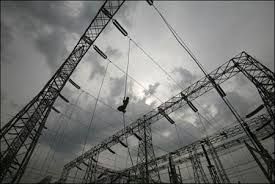 | « Back to article | Print this article |
 The Central Electricity Regulatory Commission, country’s power sector regulator, on Monday announced the final five-year tariff guidelines for companies, squeezing regulated returns, cutting incentives and tightening operating norms for power stations.
The Central Electricity Regulatory Commission, country’s power sector regulator, on Monday announced the final five-year tariff guidelines for companies, squeezing regulated returns, cutting incentives and tightening operating norms for power stations.
According to analysts, through rationalisation of return on equity, the new guidelines will dent earnings per share of companies like NTPC by up to 15 per cent. They said the move was on expected lines, as the regulatory mechanism in power yielded very high returns, which often rose to over 18 per cent.
The high RoE led to robust capacity addition and a drastic decline in deficit.
“Now was the time for the regulator to wear its consumer protection hat and rationalise power RoEs without cutting core RoEs.
"That is what it has done,” Bank of America Merril Lynch said in its report.
“While NTPC will be the worst hit due to across-the-board incentive cuts, PowerGrid will also be hit due to a 100-to-400-basis-point increase in normative transmission availability factor,” it added.
According to Amit Golcha, research analyst at Emkay Global Financial Services, the regulations will impact NTPC’s EPS for the coming financial year by 14-15 per cent and PowerGrid’s RoE by two to three per cent.
Among other power producers, the impact on hydro majors SJVN and NHPC will be three-four per cent and one-two per cent, respectively. “For NTPC, the regulations were contrary to our expectation. We expect the stock to react negatively,” said an Emkay report.
The new rate guidelines, to come into effect from April, include tightening of operating parameters, including those governing heat and oil consumed to produce power.
These also link incentives to plant load factor (PLF) at a flat rate of 50 paise per unit, as against plant availability factor at present.
PAF refers to the capacity at which a plant is available to produce power (with fuel and other technical parameters intact).
PLF, on the other hand, means the capacity at which a plant is actually generating power.
The CERC norms benchmark capacity utilisation at 85 per cent.
Power companies like NTPC are incentivised for generating power at more than 85 per cent utilisation.
However, with a slump in demand, companies are forced to run their plants at lower capacity utilisation levels.
The latest change in regulation will mean that the amount of incentive for these companies will come down when they run plants at lower PLF.
Also, in a major negative for NTPC, under the new regulations, tax on income will be computed with reference to the actual income-tax paid on a pro-rate basis with respect to RoE.
At present, tax on RoE is computed at the normal tax rate applicable to the generator.
CERC also cut station heat rate from the current 2,500 kilocalories a unit to 2,450 kilocalories for 250 Mw sets, besides halving secondary fuel oil consumption to 0.5 ml a unit.
Reacting to the new regulations, NTPC’s stock tumbled on the BSE on Monday.
Some relief for it, though, has come in the form of reduced target availability for stations to 83 per cent (from 85 per cent) for recovery of fixed cost. Also, cost of spares has been allowed a pass-through in tariff.
On the draft of the tariff guidelines, NTPC Chairman Arup Roy Choudhury had in December urged investors not to worry and hoped the incentive would not be linked to PLF in the final guidelines.
POWER PLAY
Positives
Negatives